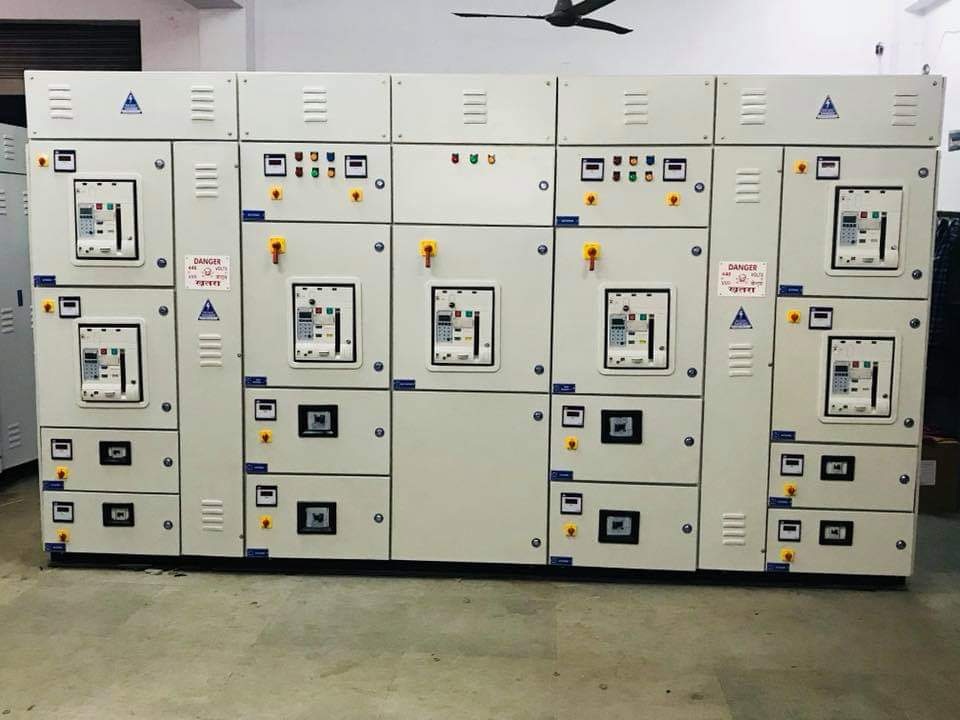Synchronization panels play a vital role in ensuring uninterrupted power distribution. They are crucial in many industries and settings, providing a synchronized and reliable power supply. In this article, we will explore the Design and assembly all synchronization panels, shedding light on the critical steps involved in their creation.
What are the Synchronization Panels?
Synchronization panels, often called sync panels, are electrical control panels designed to manage multiple power sources and ensure they work harmoniously. They are commonly used when a backup power source, such as a generator, is required to take over seamlessly in case of a primary power failure.
The Importance of Synchronization Panels
Synchronization panels are essential because they prevent power interruptions, ensuring critical systems and equipment function without disruption. They are especially critical in industries where downtime can result in significant financial losses.
Designing Synchronization Panels
Determining Load Requirements
The first step in designing a synchronization panel is determining the load requirements. This involves calculating the total power demand of the connected equipment and systems. Accurate load assessment is crucial to selecting the appropriate components.
Selecting Components
Once the load requirements are established, the next step is to select the components for the synchronization panel. This includes choosing suitable circuit breakers, switches, meters, and controllers based on the system’s specifications.
Creating the Electrical Schematic
The electrical schematic is the blueprint that guides the assembly process. It outlines the connections between components and ensures the synchronization panel functions as intended. Designing a clear and accurate schematic is critical to the design phase.
Assembly Process
Preparing the Enclosure
The synchronization panel is housed in an enclosure to protect it from environmental factors and unauthorized access. The enclosure should be chosen based on the installation location and the level of protection required.
Mounting Components
The next step is to mount the selected components with the enclosure ready. Following the electrical schematic involves securely attaching circuit breakers, switches, meters, and controllers inside the panel.
Design and assembly all synchronization panels wiring diagrams
Designing and assembling all synchronization panels wiring diagrams is crucial in creating these essential components for power distribution systems. The wiring diagram visually represents how all the electrical components within the synchronization panel are connected and interact. It provides a clear and organized layout of wires, circuit breakers, switches, meters, controllers, and other elements, ensuring the panel functions precisely as intended. These diagrams are not only instrumental during the assembly process but also invaluable for troubleshooting and maintenance in the future. By meticulously designing and documenting the wiring diagram, technicians and engineers can ensure the reliability and safety of synchronization panels, contributing to seamless power supply across various applications.
Testing and Quality Assurance
Functionality Testing
It must undergo rigorous functionality testing before the synchronization panel is put into operation. This includes checking the synchronization of power sources, ensuring that switches and controls work correctly, and verifying that safety features are operational.
Safety Checks
Safety is paramount when working with synchronization panels. Comprehensive safety checks should be conducted to identify and rectify any potential hazards.
Installation and Maintenance
Proper Placement
The synchronization panel should be placed correctly to optimize its functionality during installation. Adequate ventilation and accessibility are crucial considerations.
Ongoing Maintenance
Regular maintenance is essential to keep the synchronization panel in optimal condition.
Benefits of Synchronization Panels
Enhanced Power Reliability
Synchronization panels enhance power reliability by seamlessly transferring between power sources, minimizing downtime.
Load Management
They enable efficient load management, ensuring power is evenly distributed and preventing overloads.
Fuel Efficiency
Synchronization panels contribute to fuel efficiency by allowing generators to operate at optimal loads, reducing fuel consumption.
Applications of Synchronization Panels
Industrial Sector
Synchronization panels are extensively used in industries to maintain uninterrupted power for critical operations.
Commercial Buildings
They are employed in commercial buildings to ensure continuous power supply for lighting, HVAC, and other systems.
Residential Complexes
In residential complexes, synchronization panels can provide backup power for elevators and essential services.
Trends in Synchronization Panels
Automation and Remote Monitoring
The future of synchronization panels lies in automation and remote monitoring, enabling real-time control and diagnostics.
Sustainable Energy Integration
Integrating sustainable energy sources like solar and wind power is a growing trend, making synchronization panels eco-friendly.
Design and assembly all synchronization panels for generator
Synchronization panels for generators are specialized electrical control panels that enable the coordinated operation of multiple generators. They ensure that these generators work in perfect harmony to deliver a consistent and uninterrupted power supply.
In Closing
Synchronization panels are the unsung heroes of power distribution, ensuring that our world stays lit and operational even in the face of electrical challenges. Designing and assembling these panels involves careful planning, component selection, and rigorous testing. As we embrace future trends in automation and sustainable energy, synchronization panels will continue to play a vital role in our daily lives.
What is the purpose of a synchronization panel?
Synchronization panels ensure uninterrupted power supply by seamlessly switching between power sources in case of failures.
Are synchronization panels only used in large industries?
No, synchronization panels find applications in various settings, including commercial buildings and residential complexes.
How do synchronization panels contribute to energy efficiency?
They optimize power distribution, reducing energy wastage and enhancing fuel efficiency in backup generators.
Can synchronization panels be customized for specific needs?
Yes, synchronization panels can be tailored to meet the unique requirements of different applications.
What are the critical safety precautions when working with synchronization panels?
Safety precautions include proper grounding, regular maintenance, and adherence to electrical safety standards to prevent accidents and ensure safe operation.



